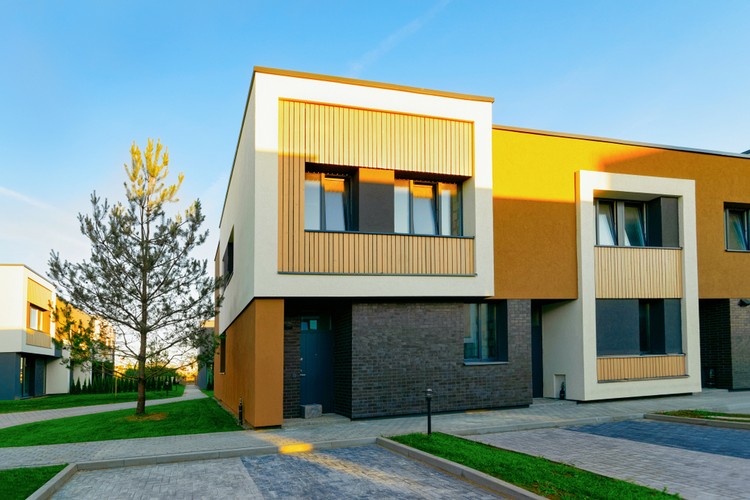Prefabricated Homes: Modern, Efficient, and Built to Last
Prefabricated homes have evolved from basic kit houses to high-quality residences designed and manufactured with precision. Built in sections off-site and delivered for final assembly, today’s prefab options include modular, panelized, and manufactured homes—each with distinct advantages. Whether you’re seeking a primary residence, an accessory dwelling unit (ADU), or a vacation retreat, prefab construction offers speed, predictability, and sustainability. Below, we unpack how prefabricated homes work, what to expect in terms of durability and energy performance, and how timelines, financing, and long-term value compare to traditional builds.

What is a prefabricated home?
A prefabricated home is built in a factory-controlled environment and then transported to your land for assembly. The main categories include modular homes (assembled from factory-built modules on a permanent foundation), panelized homes (flat wall and roof panels transported and assembled on-site), and manufactured homes (built on a permanent chassis and typically regulated under a different code). This off-site approach reduces weather delays, enables tighter quality control, and can minimize material waste. For buyers, it means a clearer building process, fewer surprises, and shorter timelines from contract to move-in.
Benefits of prefab construction
Speed is a primary advantage: factories can build modules or panels while site preparation and foundation work happen simultaneously. This parallel workflow often trims months from a traditional schedule. Quality can also be more consistent because components are built indoors with specialized equipment and repetitive precision. Prefab homes tend to be highly customizable within established design templates, allowing for flexible floor plans and finishes. Additionally, factory purchasing power may reduce material waste and streamline procurement, contributing to a lower environmental footprint and potentially fewer change orders on-site.
Design, materials, and durability
Modern prefabricated homes are engineered to meet local building codes and performance standards, often with robust framing, advanced sheathing, and high-quality insulation. Many providers offer a range of exterior materials—fiber cement siding, metal cladding, wood, or stucco—along with durable roofing and high-performance windows. Structural engineering is integral, particularly for modular homes that must withstand transportation and craning. When designed and built properly, prefab homes can match or exceed the longevity of site-built counterparts. Homeowners can choose resilient finishes and moisture management systems to support long-term durability in diverse climates.
Energy efficiency and sustainability
Factory-built components help achieve tighter building envelopes with consistent air sealing and insulation. That often translates to lower heating and cooling loads and improved indoor comfort. Many prefab providers offer energy-efficient packages that include high R-value insulation, low-e glazing, advanced framing techniques, heat pump systems, and smart thermostats. Some designs can be optimized for solar readiness or net-zero energy, with careful attention to orientation and shading. Reduced construction waste and fewer on-site deliveries further enhance sustainability. In many areas, buyers can work with local services to add renewable energy systems and energy audits tailored to the home’s design.
Timeline, permits, and delivery
The overall timeline depends on design complexity, permitting processes in your area, and site conditions. After selecting a model and customizing finishes, the manufacturer begins production while you or your general contractor handle site prep and utilities. Permits are typically required just as they are for site-built homes, and inspections occur at both the factory (for code compliance) and the site (for foundation, utility connections, and final occupancy). Delivery involves coordinating transportation, cranes for modular set, and on-site trades for stitching, weatherproofing, and interior finish work. Clear communication among the provider, contractor, and local building officials helps ensure a smooth handoff from factory to foundation.
Financing, insurance, and resale
Financing options vary by product category. Modular and panelized homes placed on permanent foundations often qualify for conventional mortgages similar to site-built homes, whereas manufactured homes may require specialized loan products depending on land ownership and installation. Insurance works much the same way: coverage is typically based on the home’s classification, local risk factors, and replacement value. Resale prospects depend on location, design quality, and market perception. Thoughtful siting, timeless finishes, and strong energy performance can enhance long-term value. When evaluating providers in your area, ask about code compliance, warranties, and appraiser familiarity with prefab construction to support accurate valuations.
Working with local services
Prefabricated homes still rely on local expertise for site preparation, foundation work, utility hookups, and final inspections. Partnering with experienced general contractors, surveyors, and civil engineers in your area can streamline the process and mitigate delays. It’s also wise to engage local lenders and insurers who understand factory-built classifications and can advise on documentation. Early coordination among your prefab provider, local services, and building department helps ensure that design specifications, seismic or wind requirements, and energy codes are properly aligned before production begins.
Choosing the right provider
When comparing prefab companies, review portfolio depth, code compliance for your region, and the level of customization available. Ask for detailed specifications, including insulation values, window performance, structural engineering standards, and mechanical systems. Evaluate transparency in scheduling and change-order policies, and review sample contracts, warranty terms, and after-sales service. If you’re building in a challenging site or climate, prioritize providers with proven experience in similar conditions. Finally, request references and, when possible, visit completed homes to assess craftsmanship, fit-and-finish, and real-world performance.
Long-term care and maintenance
Maintenance for prefabricated homes is similar to any well-built residence: schedule regular inspections of roofing, gutters, sealants, and mechanical systems; maintain adequate ventilation; and address minor issues promptly to prevent larger repairs. If your home includes advanced building envelopes or mechanical ventilation, follow the manufacturer’s service intervals and filter replacement schedules. Keeping documentation—plans, engineering stamps, appliance manuals, and warranty records—will support maintenance, future upgrades, and resale. With proper care, a quality prefab home can deliver decades of comfortable, efficient living.
Conclusion
Prefabricated homes combine precision manufacturing with thoughtful design to deliver reliable timelines, consistent quality, and energy-smart performance. By understanding the main categories, coordinating with local services, and vetting providers for code compliance and warranty strength, buyers can navigate the process confidently. The result is a modern, durable home tailored to its site and climate—built efficiently off-site, and finished to high standards where it matters most: on your land.






